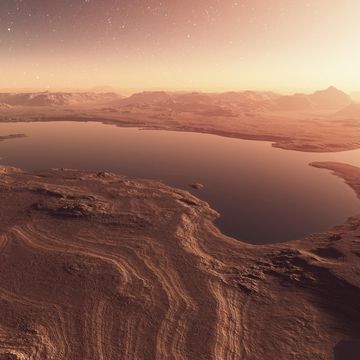LONG BEACH, Calif.
The rocket equation has always had one frustrating yet inevitable consequence: For every pound of payload headed for, say, the lunar surface, NASA needs hundreds more pounds of hardware and propellant during low Earth orbit—and many times that on the launchpad. For example, NASA's planned Ares V vehicle (a modern-day replacement for the Saturn V that delivered our first visitors to the moon over 30 years ago) will weigh more than 3500 tons prior to launch from Cape Canaveral, Fla., but land just 18 tons of weight on the moon—only two tons of which aren't the lander itself.
Because each post-shuttle era launch will cost billions of dollars, NASA is crunching the numbers on how to get more lunar payload "bang" for its transport vehicle "buck." Boeing proposed what might be the ultimate problem solver at the AIAA (American Institute of Aeronautics and Astronautics) Space 2007 conference here last week: a low Earth orbit gas station, or propellant depot, to refill the lunar-injection vehicle tanks, fill up NASA's new lander and deliver dramatically more efficient payloads to the surface of the moon.
NASA's current mission plan (click here for PM's behind-the-scenes report) calls for the Ares V to send the new lunar lander and its payload into Earth orbit. Once there, Ares V would not only have to dock with the Orion crew vehicle (launched separately on the Ares I rocket) but also restart and provide the initial burn to send the assembled system into a trajectory toward the moon.
Boeing's alternative would combine the Orion rendezvous with a pitstop for gas, allowing the Ares V to lift off from Earth with a much larger payload—and an empty lander. Boeing says this would allow NASA to deliver about three times as much mass to the lunar surface, and over fifteen times as much payload. What's more, Ares V could then send the lander-Orion package all the way to lunar orbit with full tanks, rather than NASA's current plan to use extra propellant in slowing down before soft landing.
Of course, there's no such thing as a free launch. In order for the propellant depot to become a reality, it has to reach orbit—and, more important, so does the gas.
Boeing's plan is to build the depot in pieces like a stripped-down International Space Station, only in modules based on the upper stage of the Delta launch vehicle. Two depots would provide redundancy, each one with a total capacity of 175 tons of liquid oxygen/liquid hydrogen (25 tons for the lander, 125 for the rocket, with margins for boil-off and other contingencies). And while many of the necessary parts and operations (i.e., orbital cryogenic storage and transfer) still have to be developed and matured, they're plausible—and critical for a space-faring civilization anyway.
How the propellant would reach such a pitstop in the sky is really the beauty of Boeing's concept. NASA has been seeking ways to involve both international partners and the commercial sector—Michael Griffin, the agency's administrator, told PM recently that such a "private/public synergy" was "crucial for the future"—but NASA has been reluctant to put any partner on the critical path. The good news? Anyone can make propellant, and anyone can deliver it. The orbital reservoir will allow for different quantities from tanker vehicles both small and large. The payload itself is cheap, so even low-reliability launchers could potentially be used.
If one provider doesn't deliver, another can pick up the slack, whether it's based in the U.S. or overseas. It's an ideal means to provide a large market for a variety of launch providers, driving the competition necessary to reduce launch costs. And the lower the propellant costs get, the lower the cost of per-pound lunar payload delivery gets—space economics at its finest.
Down the road, Boeing's gas station could provide even more benefits than an improved lunar payload. Communications companies could improve their satellite payloads to geostationary orbit and beyond. NASA might be able to combine the dual launches in its moon program, or make its lunar landing vehicle reusable, with another depot using propellants produced on the moon. Because most of the mass necessary to get to the moon is propellant (though Boeing would never say so), a space gas station might even eliminate the need for a heavy-lift launcher altogether, increasing the launch rate of smaller, cheaper vehicles, which in turn could cut costs for getting to the moon and, eventually, Mars.
Rand Simberg is a recovering aerospace engineer and the blogger behind Transterrestrial Musings.












